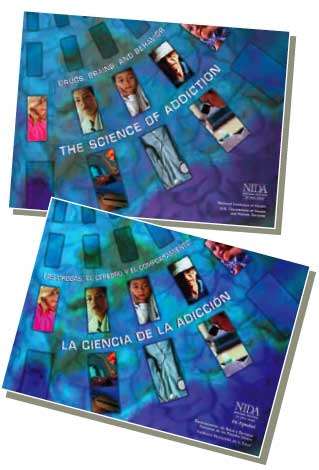Clearing up common misconceptions and reducing the stigma associated with drug addiction are the goals of a new book from NIDA. Drugs, Brains, and Behavior: The Science of Addiction explains in plain language what scientists know about how drug addiction alters the brain and affects behavior.

"Thanks to science, our views and our responses to drug abuse have changed dramatically, but many people today still do not understand why people become addicted to drugs or how drugs change the brain to foster compulsive drug abuse," says NIDA Director Dr. Nora D. Volkow. "This booklet aims to fill that knowledge gap by providing scientific information about the disease of drug addiction in language that everyone can understand."
The booklet discusses the reasons people take drugs, why some people become addicted while others do not, how drugs work in the brain, and how addiction can be prevented and treated. It also explains the consequences of abuse and addiction for substance abusers, their offspring, their sexual partners, and others.
Some of the key points made in the publication are:
- Drug addiction is a disease, not a moral failing. Drugs change the brain, disrupting and hijacking its normal functions. For most people, the initial decision to take drugs is voluntary, but over time, drug abuse can cause changes to the brain that impair a person's self-control and ability to make sound decisions, while generating intense impulses to take drugs.
- Drug addiction is preventable. Researchers have developed a broad range of programs that are effective in preventing early use of tobacco, alcohol, and illicit drugs and in curbing abuse that has already begun. Preventing substance abuse early in life, especially during adolescence, can reduce the chances of later abuse and addiction.
- Drug addiction is treatable. Like diabetes, asthma, and heart disease, drug addiction is a chronic disease that can be managed successfully. Relapse is not a sign of treatment failure, but rather an indication that treatment should be reinstated or adjusted to help addicted individuals fully recover.
NIDA hopes that a better understanding of the basics of addiction will empower substance abusers to make informed choices about their own lives and treatment providers to adopt science-based policies and programs to reduce abuse and addiction in their communities. The need is clear: In the United States, abuse of illicit drugs and alcohol annually contributes to more than 100,000 deaths, while tobacco is linked to an estimated 440,000 more.
Print copies of the 30-page, full-color booklet can be ordered without charge from drugpubs.drugabuse.gov. The publication is also available at Drugs. Brains, and Behavior: The Science of Addiction.
